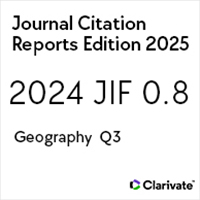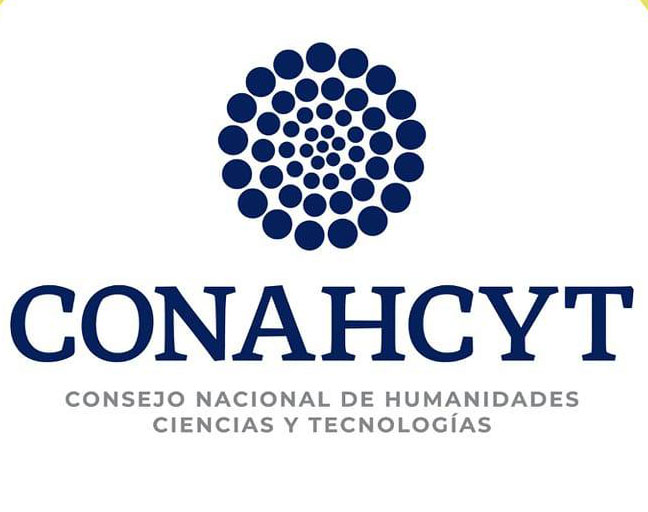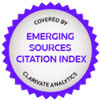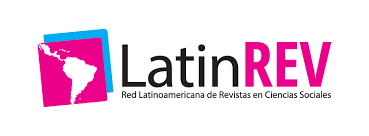From made up communities to invisible communities: Toward a framework for the study of Baja California’s Yumans
De comunidades inventadas a comunidades invisibles: hacia un marco teórico para el estudio de los Yumanos de Baja California
https://doi.org/10.21670/ref.2001.04.a01
Keywords:
Transnational community, hyperspace, PolybiusAbstract
This paper focuses on the construction of social networks and ethnicity among the Yuman indigenous people of Baja California, Mexico. By questioning the traditional view of the Yumans as decimated and culturally assimilated groups, this paper suggests a new theoretical framework to approach the alleged dissipation of distinctive Yuman populations. Central concepts of this framework are the notions of transnational community, hyperspace and polybian. According to the author, these concepts applied to field-research may reveal how the Yumans remain engaged in the elaboration of new forms of social organization and ethnic self-references, through the construction of wide social networks that include (although it is not limited to) the linguistically-related groups living in the United States.Resumen
Este articulo es una aproximación al proceso de construcción de redes sociales y etnicidad entre los indígenas yumanos de Baja California, México. A partir de su cuestionamiento a los enfoques tradicionales que reiteradamente han anunciado la extinción y asimilación de estos grupos, este articulo sugiere un nuevo marco teórico para el estudio de la supuesta disipación de estas poblaciones étnicamente diferenciadas. Conceptos centrales de esta propuesta teórica son los conceptos de comunidad transnacional, hiperespacio y polibio, los cuales según el autor, aplicados al trabajo de campo, pueden conducirnos a revelar las formas en que los yumanos permanecen comprometidos en la elaboración de nuevas formas de organización social y auto-referencia étnica, a través de la construcción de amplias redes sociales que incluyen (aunque no se limitan) a los grupos lingüísticamente relacionados que habitan en los Estados Unidos.References
Anderson, Benedict (1991). Imagined Communities. Nueva York: Verso.
Aschmann, Homer (1959). “The central desert of Baja California”, Demography and Ecology. University of California Press. Berkeley.
Appadurai, Arjun (1991). “Global ethnoscapes: Notes and queries for a transnational anthropology”. Recapturing Anthropology. Working in the Present. R. Fox, ed. School of American Research Press. Santa Fe. Pp. 191-210.
Baegert, Juan Jacobo (1942). Noticias de la Península Americana de California, 1794. Porrúa. México, D.F.
Basch, Linda, Glick Schiller and Szanton Blanc (1994). Nations Unbound: Transnational Projects, Postcolonial Predicaments, and Deterritorialized Nation-States. Gordon and Breach Publishers. Langhorne.
Bustamante, Jorge (1989). “Frontera México-Estados Unidos: Reflexiones para un marco teórico”. Frontera Norte 1: 7-24.
Cancian, Frank (1992). The Decline of Community in Zinacantan. University Press. Sanford, CA.
Chambers, Ian (1994). Migrancy, culture, identity. Routledge. Nueva York.
Chávez, Leo R. (1990). “Coresidence and resistance: Strategies for survival among the undocumented Mexicans and Central Americans in the United States”. Urban Anthropology 19 (1-2): 31-61.
(1992). “Shadowed Lives: Undocumented Immigrants”. American Society. Harcourt Brace College Publishers. California.
Cohen, Abner (1969). Custom and Politics in Urban Africa: a Study of Hausa Migrants in Yoruba Towns. Rouledge and K. Paul. London.
Cook, S.F. (1937). “The extent and significance of disease among the Indians of Baja California 1697-1773”. Ibero-American 12 (1). University of California Press. Berkeley.
Cornelius, Wayne (1987-1990). “Labor migration to the United States: Development, outcomes, and alternatives in Mexican sending communities”. Unauthorized Migration: Addressing the Root Causes: Research Addendum, Commission for the Study of International Migration and Cooperative Economic Development. Washington, DC. 1: 81-124.
Dieguet, Leon (1978). “Etnografía de Baja California”. Calafia 3 (5).
Evans-Pritchard, E.E. (1956). “The Nuer of Southern Sudan”. African Political Systems. Fortes Meyer and E. E. Evans, eds. Oxford: London Pub., Oxford University Press. Pp. 272-296.
Garduño, Everardo (1995). En donde se mete el sol. Historia y situación actual de los indígenas montañeses de Baja California. México, D.F.: Conaculta.
Georges, Eugenia (1990). The Making of a Transnational Community: Migration, Development, and Cultural Change in the Dominican Republic. Columbia University Press. New York.
Glick, Nina, Linda Basch and Cristina Blanc-Szanton (1992). “Towards a transnational perspective on migration”. Race, Class, Ethnicity, and Nationalism Reconsidered. The New York Academy of Sciences. New York.
Golbaum, David (1984). “Noticia respecto a las comunidades indígenas que pueblan el Distrito Norte de la Baja California.” Calafia V (3): 3-5.
Gupta, Akhil y James Ferguson (1992). “Beyond culture: Space, identity, and the politics of difference”. Cultural Anthropology 7 (1): 6-23. DOI: https://doi.org/10.1525/can.1992.7.1.02a00020
Hinton, Thomas y Roger Owen. 1957. “Some surviving groups in northern Baja California, Mexico”. America Indígena 17 (1).
INAH (Instituto Nacional de Antropología e Historia) (1972). “Censo de los Grupos Indígenas de Baja California”. Departamento de Etnología y Antropología Social. Mexicali, mimeo.
“Censo de los Grupos Indígenas de Baja California”. Departamento de Etnología y Antropología Social. Mexicali,
mimeo.
INI (Instituto Nacional Indigenista) (1982). “Las Comunidades Indígenas de Baja California”. Centro Coordinador Indigenista.
Ensenada, mimeo.
(1986). “Estrategia para Trabajo con los Grupos Indígenas de Baja California”. Centro Coordinador Indigenista. Ensenada,
mimeo.
(1991). “Censo de las Comunidades Indígenas de Baja California”. Centro Coordinador Indigenista. Ensenada, mimeo.
Kearney, Michael (1986). “From the invisible hand to visible fact: Anthropological studies of migration and development”. Annual Review of Anthropology 15: 331-361. DOI: https://doi.org/10.1146/annurev.an.15.100186.001555
(1991). “Borders and boundaries of state and self at the end of empire”. Journal of Historical Sociology 4 (1): 52-74. DOI: https://doi.org/10.1111/j.1467-6443.1991.tb00116.x
(1995). “The local and the global: The anthropology of globalization and transnationalism”. Annual Review of Anthropology 24: 547-65. DOI: https://doi.org/10.1146/annurev.an.24.100195.002555
(1996). Reconceptualizing the Peasantry. Anthropology in Global Perspective. Westview Press. Boulder.
León-Portilla, Miguel (1983). “Los primeros californios: Pre-historia y etnohistoria”. Panorama Histórico de Baja California. Mexicali: UNAM/UABC.
(1985) “Los indígenas de la frontera entre México y los Estados Unidos”, Reglas del juego y juego sin reglas en la vida fronteriza. III Reunión de Universidades de México y Estados Unidos. Eds. Mario Miranda y James Wilkie, Anuies/Profmex, México, D.F.
Martínez, Pablo (1991). Historia de Baja California. La Paz: Consejo Editorial del Gobierno del Estado de Baja California Sur.
Martínez, Zepeda Jorge (1985). “Música indígena en Baja California”. Mimeo.
Massey, William C. (1949). “Tribes and languages of Baja California”. Southwestern Journal of Anthropology 5 (3): 272-307. DOI: https://doi.org/10.1086/soutjanth.5.3.3628506
Meigs, Peveril (1939). “The Kiliwa indians of lower California”. Ibero- American 15. Berkeley: University of California Press.
(1970). “Capes of human hair from Baja California and outside”. Pacific Coast Archaeological Society Quaterly 6 (1): 21-28.
Murphy, Robert F. y Julian H. Steward (1977). “Tappers and trappers: Parallel processes in acculturation”. En Evolution and Ecology, Julian H. Steward, ed. Urbana: University of Illinois Press. Pp. 151-79.
Ochoa, Jesús A. (1976). “Caciques, señores, capitanes y gobernadores. Nombramientos indígenas en Baja California”. Calafia III (3). Universiad Autónoma de Baja California.
(1979). “Distribución actual de los grupos indígenas de Baja California”. Calafia IV (1).
Owen, Roger (1959). “The Indians of Santa Catarina, Baja California Norte, Mexico: Concepts of Disease and Curing”. Ph.D.
Dissertation. Los Angeles: University of California.
(1963). “Indians and revolution: the 1911 invasion of Baja California, Mexico”. Ethnohistory 10 (4).
Pérez, Maya Lorena (1990). “Ser mazahua en Ciudad Juárez”. México Indígena 4: 21-25.
Richmond, Anthony H. (1988). Socio-Cultural Adaptation and Conflict in Immigrant-Receiving Countries in International Migration Today. Charles DOI: https://doi.org/10.1007/978-1-349-19017-1_3
Stahl, ed. Pp. 109-124. Belgium: Unesco, University of Western Australia, Centre for Migration and Development Studies.
Rouse, Roger (1991). “Mexican migration and the social space of postmodernism”. Diaspora 1 (1): 9-23. DOI: https://doi.org/10.1353/dsp.1991.0011
(1992). “Making sense of settlement: Class transformation, cultural struggle, and transnationalism among Mexican migrants
in the United States in towards a transnational perspective on migration. Race, Class, Ethnicity, and Nationalism Reconsidered”.
N. Glick Schiller, L. Basch, and C. Blanc-Szanton, eds., New York Academy of Sciences. Nueva York. Pp. 25-52.
Sassen, Saskia (1998). Globalization and its discontents. The New Press. Nueva York.
Stahl, Charles W. (1988). International Migration Today. Charles Stahl ed., Belgium: Unseco, University of Western Australia, Centre for Migration and Development Studies.
Symons, Donald (1979). The Evolution of Human Sexuality. Oxford: Oxford University Press.
Varese, Stefano (1994). “Entre el tianguis y los designios neo-imperiales: Etnopolítica de la migración transnacional indígena”. Coloquio La Ruta Mixteca. Agosto 2-3. Mimeo.
Velez-Ibanez, Carlos G. (1996). Border Visions. Mexican Cultures of the Southwest United States. Tucson: The University of Arizona Press. DOI: https://doi.org/10.2307/j.ctv1qwwj58
Wolf, Eric (1957). “Closed corporate communities in Mesoamerica and Java”. Southwestern Journal of Anthropology 13 (1): 1-18. DOI: https://doi.org/10.1086/soutjanth.13.1.3629154
COMUNICACIÓN PERSONAL
Cañedo, Carlos; Informante pai-pai
Cortez, Edna; Bióloga
Dominguez, Anselmo; Informante t’pai
Peralta, Benito; Informante pai-pai
Vega, Andrés; Informante k’miai
Zárate, David; Historiador































